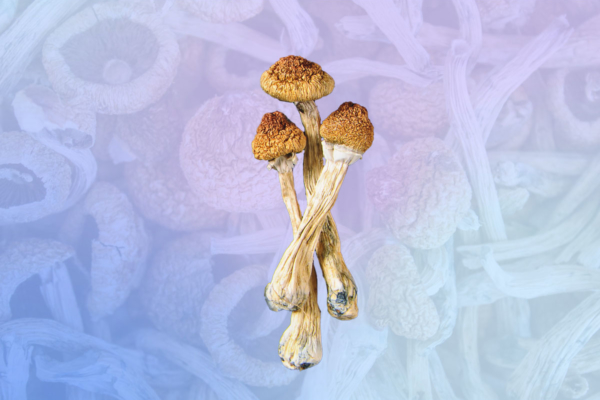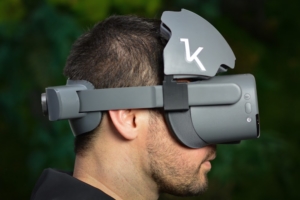
Ketamine therapy experiences can be incredibly powerful. They can show us repressed parts of ourselves, help us to discover new perspectives and challenge old ones, and support us in processing difficult emotions or trauma. However, the work rarely ends when your ketamine therapy experience does – what should always come afterwards is integration.
When we seek to integrate ketamine therapy experiences, what we’re really trying to do is twofold:
First, we should seek to make meaning from each experience, to define what the different elements of the experience mean for us and how we want to interpret their significance for us and our growth. For example … if a lot of emotion came up during the experience (such as sadness), you may want to make sure you know where that sadness came from, or to explore/define a new version of yourself that isn’t burdened with that sadness.
Second, we want to determine what action or changes – whether internal (thoughts, emotions, perspectives) or external (actions) – we want to make as a result of the experience. For example, you might take actions to change your relationship with someone who you’d previously had difficulties or conflict with, or work on embodying the perspective of seeing them (or yourself) as innocent and having been just doing their best to get by when they hurt you.
With this in mind, here are 6 ways you can integrate your ketamine therapy experience:
1. Set Intentions for How You Want to Integrate Your Ketamine Therapy Experience
It is a common practice to set intentions for a psychedelic or ketamine therapy experience, but it’s equally important to get clear on what work is left for you to do after your experience. It can be helpful to write down a specific intention for what you want to accomplish through your integration process.
For example, if your intention for your ketamine therapy experience was “I want to explore and heal the abandonment wound I have from the way my parents neglected me as a child”, your intention for your integration process might be “I want to explore any pain that still needs to be released around this abandonment wound” or “I want to practice ways to support me feeling safely attached to my partner, so that my abandonment wound doesn’t get in the way of how I connect with them.”
Looking for ketamine therapy? Click here to find top rated ketamine clinics near you
2. Record Voice Notes – Stream of Consciousness
A lot of people find popularly recommended ways of integrating such as journaling or making art to be difficult to get started with. Voice notes are a different medium that might help you to feel more conversational and create an easier access to your subconscious. If you need some prompts try: “When I think about my experience something that comes up is…” or “Something I feel like I got out of my experience with ketamine therapy is…” or “something I’d like to explore to integrate my ketamine therapy experience is…”
3. Connecting Back to Your Practice with Visualization
For a lot of people ketamine experiences can have visual components, especially at higher doses. Try spending 10-15 minutes lying down with your eyes closed working on remembering some of the imagery that came up during the experience, and seeing what feelings arise as you engage with these images.
If you find this practice difficult or have trouble with visualization, start off by spending a few minutes visualizing a complex spinning shape (such as an animated computer screensaver) or by imagining how you would stack a bunch of luggage in the back of a vehicle – these types of practices help to activate the visuospatial parts of your brain.
4. Dialoguing with Inner Parts During Your Ketamine Therapy Integration
Based on the concept of internal family systems, try having conversations with parts of yourself to see how they’re feeling and if there’s anything that you can do to make them feel heard and supported. For example, if there is a part of you that feels ashamed and afraid to put yourself out there because you were bullied when you were younger, ask that part of yourself what it needs and what it would take to feel safe.
Note that if this feels confusing or difficult for you, you may want to try doing it with a therapist or integration coach in the beginning. Doing this in writing (vs. in your head) can also make it easier. There is also a great book called Self-therapy by Jay Earley that you may find helpful.
5. Meditating on Feelings of Love, Safety, and Warmth
If you did any kind of emotional processing during your experience, there’s a chance that you are feeling a bit raw at times in the following days or weeks. This is normal, and it can be helpful to put energy towards creating a nurturing container for yourself by meditating regularly on feelings that make you feel supported and held.
Loving-kindness meditation is one way to do this. You can look up guided meditations on YouTube or you can reflect back on a specific feeling you felt during the experience and re-connect to that feeling by focusing on it.
6. Using Breathwork Exercises to Support Deeper Release and Integration
Breathwork can help you integrate your ketamine therapy experience in a number of ways. Breathwork is a powerful way of manipulating your internal state. Whether it be through slow, deep, and steady breaths that help to calm your nervous system and improve your stress response, or faster, more aggressive breaths that help you to feel energized and connect with deeper parts of yourself, breathwork is an amazing way to support your integration practice. For example, if your ketamine therapy experience showed you that you have a lot of sadness to process, you can use breathwork to continue to get in touch with your sadness.
Importantly, unless you feel confident about processing strong emotions on your own, it can be helpful to do breathwork with a therapist, coach, or trusted friend who is able to support you during your breathwork experience.
There are endless options for you to integrate ketamine therapy experiences you’ve had, but the most important underlying thing to do is devote consistent energy towards processing the experience in any kind of meaningful ways that support you. Your integration should be a regular part of your weekly routine until you have the sense that you feel “complete” with your initial intentions.
If you have questions about integrating your ketamine therapy experience, or any other psychedelic experience, you can reach out to me by joining the personal growth community Bonfire, or by emailing me at jack@bonfire.earth.






